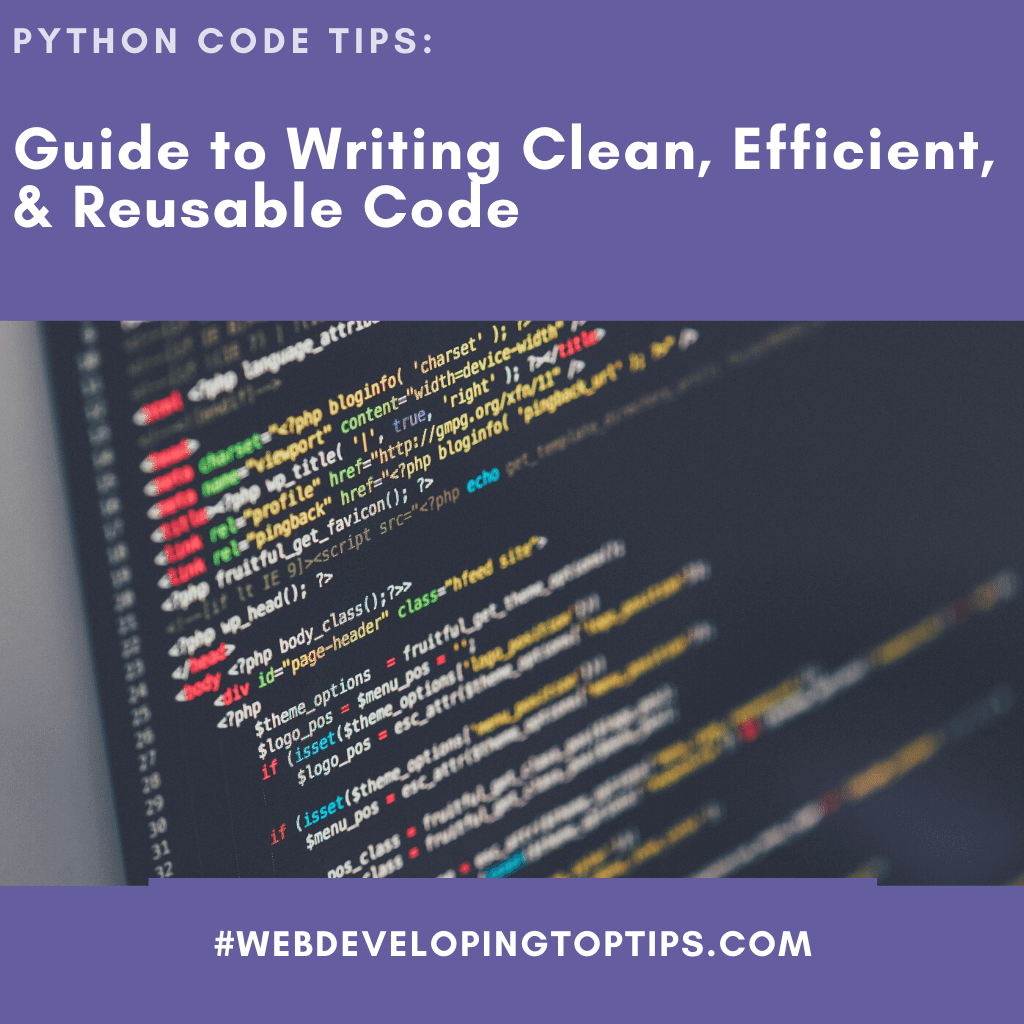Introduction To Python
Python is a general-purpose, high-level programming language. It is one of the most popular programming languages in the world, and it is used for a wide variety of tasks, including web development, data science, and machine learning.
Python is a very easy language to learn. Its syntax is simple and straightforward, and it has a large community of users and developers who can help you if you get stuck.
If you are new to programming, Python is a great language to start with. It is easy to learn, but it is also powerful enough to be used for serious development projects.
Benefits of learning Python
Here are some of the benefits of using Python:
- It is easy to learn and use.
- It is powerful and versatile.
- It has a large community of users and developers.
- It is free and open-source.
How to Write Clean, Efficient, and Reusable Python Code
An elaboration of the sheet for easy to understand code:
Use Simple And Descriptive Variable Names
When you are writing code, it is important to use simple and descriptive variable names. This will make your code easier to read and understand for yourself and for others. For example, instead of using the variable name x, you could use the variable name user_input. This would make it clear to anyone reading your code that the variable user_input is storing the input from the user.
Use Comments To Explain Your Code
Comments are a great way to explain what your code is doing. They can also be helpful for yourself in the future, when you come back to your code and need to remember what it does. Comments can be placed anywhere in your code, but they are usually placed at the beginning of a function or a block of code.
Here is an example of a comment:

This comment explains what the factorial() function does. It also explains the logic of the function.
Use Whitespace To Make Your Code Readable
Whitespace can make your code much easier to read and understand. Use spaces and line breaks to break up your code into logical sections. This will make your code easier to scan and to understand the overall structure of your code.
Here is an example of code that uses whitespace effectively:

This code is easy to read because it uses whitespace effectively. The code is broken up into logical sections, and the indentation makes it easy to see the structure of the code.
Use Indentation To Show The Structure Of Your Code
Indentation is a great way to show the structure of your code. It can help you to see how your code is organized, and it can also make your code more readable for others.
The Python programming language uses indentation to show the structure of code. For example, the following code:

is indented to show that the if statement and the else statement are nested inside the def statement. This makes it easy to see the structure of the code and to understand how it works.
Use Functions To Break Down Your Code Into Smaller Chunks
Functions are a great way to break down your code into smaller chunks. This can make your code easier to understand and maintain. When you use functions, you are essentially packaging up a piece of code into a single unit. This makes it easier to understand what the code does, and it also makes it easier to reuse the code in other parts of your program.
Use Libraries And Modules To Avoid Reinventing The Wheel
There are many libraries and modules available for Python. These libraries can contain code that you can use to perform common tasks. This can save you a lot of time and effort.
For example, if you need to read a file in Python, you can use the fileinput library. This library contains code that you can use to read files in a variety of formats.
Test Your Code Regularly
It is important to test your code regularly. This will help you to find errors in your code and to ensure that it is working correctly.
There are many ways to test your code. You can use the unittest module to write unit tests for your code. You can also use a debugger to step through your code and to see how it works.
Don’t Be Afraid To Ask For Help
If you are stuck, don’t be afraid to ask for help. There are many resources available online and in the Python community.
You can ask questions on forums, in chat rooms, or on mailing lists. You can also find help in books, tutorials, and online courses.
I hope this elaboration helps you to write easy to understand code.


2 thoughts on “Python Code Tips: Guide to Writing Clean, Efficient, and Reusable Code”